The dolphinium rightfully occupies an honorable place in the flower beds and lawns of our country. This is a magnificent plant represented by many varieties, has a large variety of shades. In addition, culture is not too demanding in care, and its perennial species will delight the eyes for several years without need to transplant. In this article we will tell about landing the dolphinium of many years of age and care for it.
Plant Description
Dolphinium many years of age is a tall herbaceous culture relating to the family of ilok. The flower stem is hollow, height can reach 2.5 m. It is possible to meet this culture in Asia, Europe and North America. Science is known more than 450 varieties of plants, 150 of which grow in Russia.
The inflorescences of the dolphinium perennial looks very impressive. The bud, as a rule, has 5 petals, one of which is decorated with a peculiar spike. Petals can be located in one or several rows, meet both simple and terry varieties of culture. As for the color gamut, it is quite wide. As a rule, blue and blue tones are dominated among the shades, but there are also white, purple, pink and even bright red varieties. On one stem grows many flowers collected in the brush. The length of the inflorescence ranges from 80 to 100 cm. The foliage of the dolphinium is large, dissected, dark green shade.
In the people, the described plant is sometimes called the abdomen, which is due to the healing properties of culture. In the Middle Ages, the Doctor used the Dolphinium tincture as a means for wound healing. Sometimes the flower is also called sprack - this is due to the appearance of buds, one of the petals of which resembles the spur. Note that it is not worth using a plant as a medicine, since the dolphinium refers to poisonous cultures.
Popular Multi-Year Delphinium
As mentioned earlier, in nature there is a huge variety of species of this plant, it is not possible to describe them. Below we will list only the most beautiful and popular varieties, widely used by gardeners in landscape design:
- Dolphinium Leroy is a tall culture that came to us from hot Africa. The flower is very thermally loving, its inalienable advantage over many other types is the magnificent sweet smell, something resembling the fragrance of Vanilla. The Stem Dolphinium Leroy reaches 1.5 m in height, the buds are painted in a snow-white, sometimes in a greenish hue.
- The pyramidal dolphinium in the wild growing in the mountainous area - this is exactly what the ability of the plant is well tolerating the cold and frost. This variety is able to easily withstand temperatures up to -20 ° C, the birthplace of the plant is considered to be Himalayas. To the soil, this variety is completely undemanding, it grows perfectly even on poor stony soils. From about July to September, the dolphinium produces inflorescences covered with small, up to 3 cm in diameter, flowers.
- Dolphinium terry many years of love with many gardeners for long and abundant flowering. This culture pleases the eye with its bright buds from May to August, the length of the plant's stem reaches 1-2 m. The variety of shades is very large, blue and purple tones are considered predominant colors. However, breeders do not stop on the achieved and remove all new hybrid varieties. At the moment, the Dolphinium terry black, red and even yellow shades can be found in the Gardens of Russia. This long-term culture is capable of growing at the same place for as many as 8 years.
- Dolphinium rarely color is a mid-grade plant, the stalk of which does not exceed 75 cm. The Altai region is considered to be a birthday culture.
- Dolphinium Bruno is a thermal-loving flower, which is bad to carry frost. As a rule, this variety is found in the warmth of the climate: on Tibet, in Pamirs, India, Afghanistan. Nevertheless, in Russia, some gardeners plant this plant on the flower beds, and with the arrival of the first colds, the culture is insulated with underfloor material. Dolphinium buds Bruno something resemble pansies, the predominant shade of flowers - blue-purple.
- Dolphinium high deserved its name due to a long stalk, the height of which ranges from 1.5 to 3 m.
- Dolphinium vote is a mid-grade culture that reaches a height of not more than 1 m. The flowers of this variety are painted in a red-orange tint, the flowering period of buds falls on June and July. This thermo-loving plant is better grown in pots, removing them for the winter in a warm place.
- Dolphinium Blue - a low perennial plant whose inflorescences have a rich blue shade and a dark core. This variety also relates to thermo-loving cultures, so with the arrival of winter shrubs transplanted into pots and enter the warm room. If this is not done, the next year the new seeds will warm on the flower, but they will give bloom no earlier than in the season.
- Dolphinium GuboColic has a very attractive and unusual appearance. Flowers of this variety are painted in two colors: one surface of the petals has a blue-green shade, and the second is a grayish-gray.
- Dolphinium Kashmir came to us from India, the prevailing color of buds is purple. Each flower has a dark core. Often there are varieties of varieties with snow-white inflorescences.
- Dolphinium Shorthipper refers to low cultures. The height of its stem does not exceed 20-30 cm. This variety can be found in Alaska, in the Arctic and in some regions of Russia. This is a frost-resistant plant that can easily carry winter cold.
Landing Dolphinium
Before growing a dolphinium long-term, you should pay attention to the composition of the soil where you are going to plant culture. This plant does not like acidic soils, preferring neutral and fertile land. If you have an acidic soil on your site, prepare it from autumn, making a small amount of hazed lime or dolomite flour. When preparing the soil, use 100 g of substance per 1 m² of land. To saturate the soil with the useful substances, add peat or manure to it.
We also need to decide on the landing site in advance. Remember that most delphiniums have a rather tall and thin stem, so the plant is better to plant in those places where there are no strong winds. On the windy spot, the stems of colors can break. By the way, this culture also loves the sun, so try to choose a place for flower beds on a well-lit place.
Dolphinium Perennial: Plant Care
In the rainy summer, the culture practically does not need additional irrigation, since falling precipitation is quite enough to saturate the plant with the necessary amount of moisture. If the season is quite arid, then the dolphinium must be additionally watering 1-2 times a week. Please note that moisturizing may not be frequent, but quite abundant. The water stream is better to direct under the roots, and not on the foliage. So that the soil around the bushes kept the moisture longer, it can be mulched.
So that bloom was abundant and beautiful, do not forget to make fertilizer into the soil. It is not necessary to do it too often, in one season it will be quite 3 feeding. The first time the culture fertilizes in the middle of spring, approximately in the second half of April. For such feeding, nitrogen-containing fertilizers are used, which contribute to the good growth of the stem and the development of a large number of foliage. As a nitrogen fertilizer, an organic substance can be used, for example, a korovyan dissolved in the water in proportion to 1 to 10. For the second time, the dolphinium is fed at the first weeks of summer when buds are tuned on the stems. For these purposes, potash and phosphoric compositions with a small content of nitrogen are used. So as not to be mistaken in choosing a substance, you can purchase a finished fertilizer for flowering plants. The third time the culture fertility after the buds fall. This feeding is needed so that the plant has high-quality seeds, and new kidneys of recovery appeared on the stems. For the third feeding of nitrogen, you should not use at all, we need only potash-phosphoric compositions.
Dolphinium refers to those plants that need trimming. The purpose of the procedure is to preserve the high decorative qualities of culture. The fact is that on the second season of his flowering, the dolphinium produces many young shoots, if you do not remove them on time, the inflorescences will get small and not very beautiful. As soon as you notice that young sprouts have achieved about 20 cm in height, leave the strongest and strong and the rest cut out. On one shrub it is better to leave no more than 5 healthy shoots. By the way, that the stalks of the plant did not break when their height reaches 0.5 m, tearing shoots to the support.
Those who do not plan to collect seeds from the dolphinium, often cut the stalks after the end of the flowering period. However, there are some subtleties. The dolphinium has hollow shoots, which, after trimming, water can fall, which will result in the formation of rotting and the possible death of the plant. To avoid this, some gardeners process clay stems. If you do not want to spend too much time, you can leave the flowers without trimming or cutting the stalks at a height of at least 30 cm.
Dolphinium breeding methods
Dolphinium reproduction of long-term seeds
Having access to the mature plant of the dolphinium, plant the culture is the easiest seeds that are sold in most flower shops in abundance. Cultural seeds are distinguished by a good germination, which is preserved for 4 years after collecting sowing material. But after this period, the probability of germination of shoots is practically reduced to no. The disadvantage of this method can also be called the fact that the varietal differences of the flower are often lost during seed reproduction.
The cultivation of the dolphinium of many years of seeds should be carried out with regard to such sublications:
- Before planting seeds in the ground, they must be stratified, that is, for a while, put in the cold. Such a procedure acts like hardening, providing good access to seeds in the ground and their high germination. If you live in a private house and have constant access to the nursery area, then the seeds can be planted into the ground late fall, and after the appearance of germs, it is possible to proper and dive sprouts. If you do not have the ability to follow the germination of shoots, it is easier to resort to a seaside way. Before sowing seeds, they need to hold them for several months in the refrigerator.
- It is possible to plant the sowing material in any suitable container. Universal peat-based primer is suitable as the soil, which can be purchased in a flower shop.
- Since the grains of culture are quite small, it is not necessary to plunge them into the ground. Make on the surface of the soil of the grooves depth of several millimeters, and then put the seeds there. Slightly sprinkle their layer of earth and moisture the soil surface with a spray gun.
- Sprouted shoots can be resettled at a permanent place in about May when the danger of cold weather passes.
Growing a dolphinium of many years of division
Culture Culture The division can be carried out in spring or autumn - in those periods when the plant does not bloom. However, in such a procedure there are subtleties. Dolphinium is able to grow in one place for 8-10 years - at this time it is best not to engage in its transplantation, because the plant does not like this. It is also important to take into account that after dividing the bush, the dolphinium can hurt much, so the procedure must be carried out with special accuracy. Cut the fragments of the bush should be a sharp tool, while trying not to concern the renewal kidney. All damage is subsequently needed to sprinkle with crowded coal to protect the plant from infections.
Dolphinium Delphima transplant is carried out quite often, as a rule, in Russia this procedure is made in mid-April. The well for each new plant should have dimensions of 40x40x40 cm. The distance between the individual bushes should be approximately 50 cm. Before boarding the dolphinium, it is necessary to prepare a nutritional soil, mixing the ground from the holes with humus, ash and compost. Also quite well add complex mineral fertilizers, and after planting plants, the flowerub must be moistened well.
Dolphinium breeding reproduction
The most difficult and time-consuming method of breeding the dolphinium is the transplant of its cuttings. However, it should be noted that the works are justified by the reliability and safety of the method. The cuttings are perfectly leaving in a new place, retain their varietal signs, and the maternal bush with this division is practically not suffering.
The transplant is carried out with cuttings taken from young plants. The shoots suitable for landing should reach a length of at least 5-8 cm. Since the stems of the culture hollow inside, then cut the cuttings from the root itself, so that the cavity does not open and do dirt and infection there. In order for the cuttings as quickly as possible roots, they need to be treated with a special composition, for example, "root" or "heteroacexin". Soil for landing should be light, loose and quite fertile. So that the plants are quickly rooted, they have to be warm for some time. Therefore, containers with transplanted cuttings can be held in a greenhouse or if the plants are planted directly on the flower leaf, cover them with glass banks. It is important to provide steels halftime, as well as regular watering and venting. 2 weeks after landing in the soil, some comprehensive fertilizers should be made. As a rule, with proper compliance with all the requirements, by the end of the summer, the cuttings are perfectly rooted, after which they can be replaced at a permanent point of growth.
Dolphinium as a garden design element
Many gardeners, Dolphinium is considered one of the favorite tallest perennials. The reason for this is a magnificent type of inflorescence, a bright and diverse color of buds, a flower combination with other cultures in the garden. Dolphinium begins to bloom at a time when peonies and irises have already dropped their petals, which is why this plant becomes the main bright emphasis in the design of the garden.
Very beautiful look at the lawn large dolphinium groups, especially when using various varieties and shades. This plant is often used to fulfill the background in mix bears. Culture looks harmoniously in the company with roses, Lilyiks, Astilbami, Floxami, cloves, daisies, thousands of thousands.
Dolphinium long-term, photo:

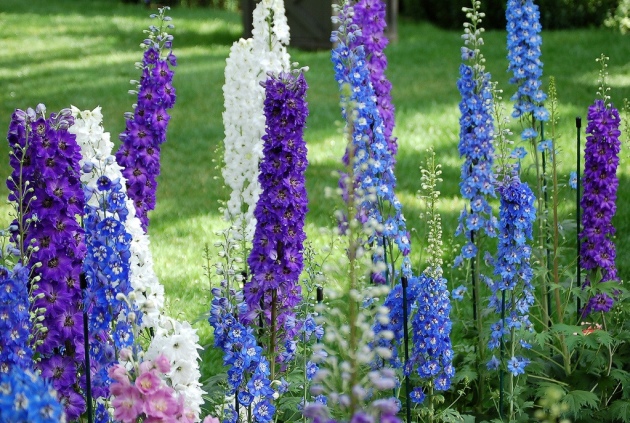
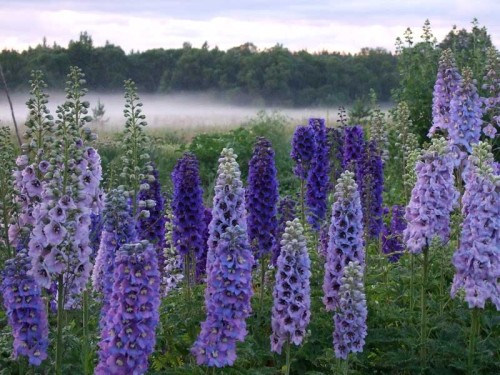


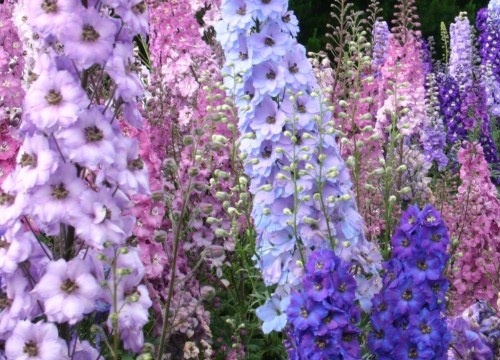
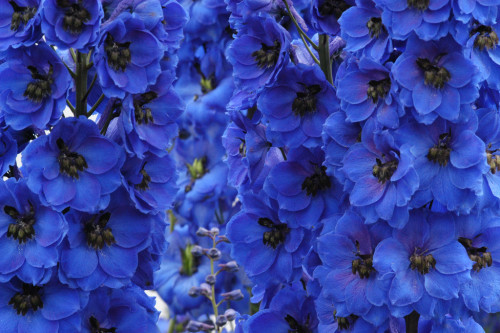
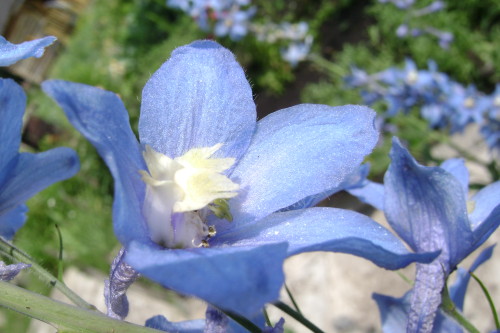
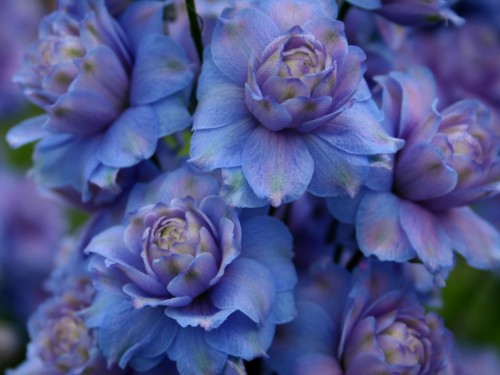
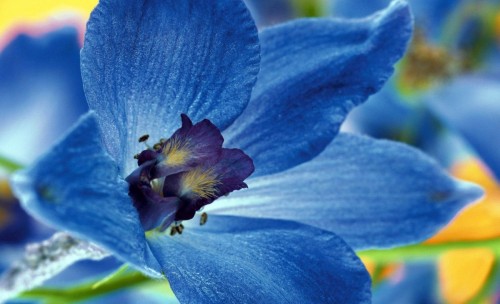
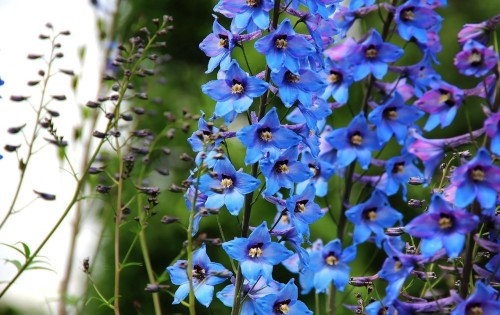
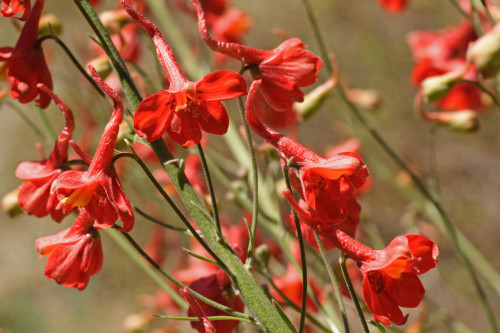
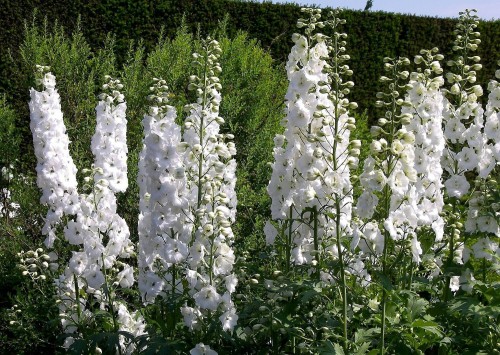
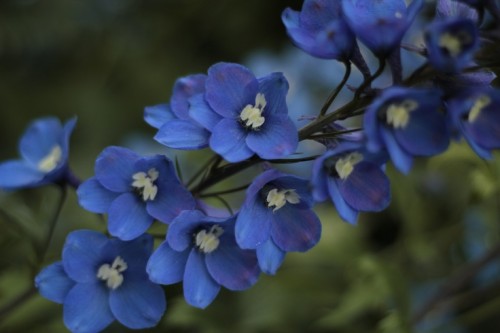












 Start a discussion ...
Start a discussion ...